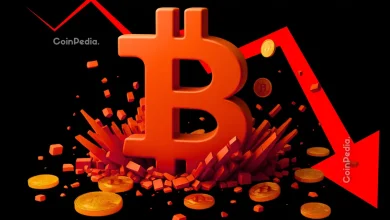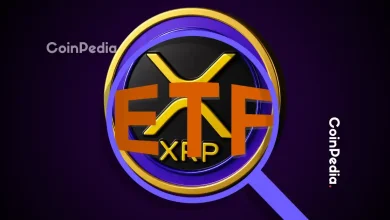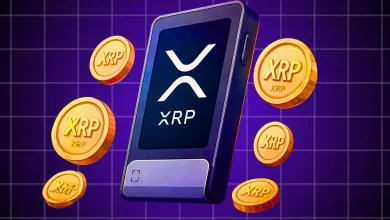
Nick Szabo returns to X after five years, weighing in on Bitcoin Core v30 and OP_RETURN expansion.
Bitcoin Core v30 update sparks purist vs maximalist debate over blockchain data and legal risks.
A dormant 2013 BTC address moves $44M, with Szabo linking it to security and potential state laws.
Legendary cryptographer Nick Szabo is back online after five years, and he’s diving straight into one of Bitcoin’s hottest debates.
The creator of Bit Gold, often called a precursor to Bitcoin, shared his thoughts on the controversial Bitcoin Core v30 update and a recent $44 million BTC move that has the crypto community talking.
Here’s the chatter.
Bitcoin Core v30: Big Changes Ahead
The Bitcoin Core team recently released v30.0rc2, the second test version of their major update. It brings a new wallet format, phases out old wallets, and simplifies command systems.
The real debate, however, is about OP_RETURN, a feature that lets users embed data in transactions. Its limits are set to rise from 80 bytes to potentially 4 MB per transaction output.
Bitcoin purists argue this is risky. They say the network should focus on financial transactions, warning that storing large amounts of data could bloat the blockchain, raise costs, and open the door to spam or malware.
Maximalists counter that users paying fees should be free to use block space however they want, and the market will naturally limit misuse.
Szabo Weighs In
Szabo didn’t hold back.
On X, he said: “Fees protect the miners, but they don’t provide enough disincentive to protect the full nodes. This has always been a problem, of course. But increasing the OP_RETURN allowance will likely make this problem worse. It will also increase legal risks.”
His return adds weight to the conversation as Bitcoin Core v30 approaches its likely release in late October.
Legal Risks Loom Large
The legal angle is tricky. Node operators could face liability if illegal content is stored on the blockchain.
Szabo pointed out: “Illegal content in a standard format, thus readily viewable by standard software, is more likely to impress lawyers, judges, and jurors, and thus is legally more risky, than data that has been broken up or hidden and thus requires specialized software to reconstruct.”
This intersects with regulations like California’s AB 1052, which could classify coins untouched for three years as unclaimed property.
$44M BTC Moves Spark Speculation
Earlier this week, a 2013 Bitcoin address moved 400 BTC, worth around $44 million. Some linked it to “Salomon Brothers” notices or possible state seizure.
Szabo explained: “I think this is somebody moving their Bitcoin to other addresses in preparation for such a law, while at the same time protesting the law. (P.S. for security as well as such legal reasons, it’s a good idea to move your Bitcoin every few years).”
Whether for legal caution, security, or protest, it highlights the mix of regulation, tech updates, and market moves shaping Bitcoin today.
With v30 updates, OP_RETURN debates, legal risks, and large BTC moves, Bitcoin is at a turning point and Szabo is encouraging conversation.
Never Miss a Beat in the Crypto World!
Stay ahead with breaking news, expert analysis, and real-time updates on the latest trends in Bitcoin, altcoins, DeFi, NFTs, and more.
FAQs
The debate centers on increasing the OP_RETURN data limit from 80 bytes to potentially 4MB, which purists fear will “bloat” the blockchain with non-financial data, raising costs and legal risks.
Nick Szabo is a legendary cryptographer, creator of Bit Gold (a Bitcoin precursor), who argues that the increased OP_RETURN allowance worsens the problem of protecting full nodes from overload, despite transaction fees.
OP_RETURN is a standard Bitcoin transaction feature that allows users to embed a small amount of data into the blockchain. It is currently limited to 80 bytes but is used for token creation and various forms of data embedding.
Trust with CoinPedia:
CoinPedia has been delivering accurate and timely cryptocurrency and blockchain updates since 2017. All content is created by our expert panel of analysts and journalists, following strict Editorial Guidelines based on E-E-A-T (Experience, Expertise, Authoritativeness, Trustworthiness). Every article is fact-checked against reputable sources to ensure accuracy, transparency, and reliability. Our review policy guarantees unbiased evaluations when recommending exchanges, platforms, or tools. We strive to provide timely updates about everything crypto & blockchain, right from startups to industry majors.
Investment Disclaimer:
All opinions and insights shared represent the author's own views on current market conditions. Please do your own research before making investment decisions. Neither the writer nor the publication assumes responsibility for your financial choices.
Sponsored and Advertisements:
Sponsored content and affiliate links may appear on our site. Advertisements are marked clearly, and our editorial content remains entirely independent from our ad partners.







